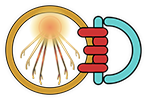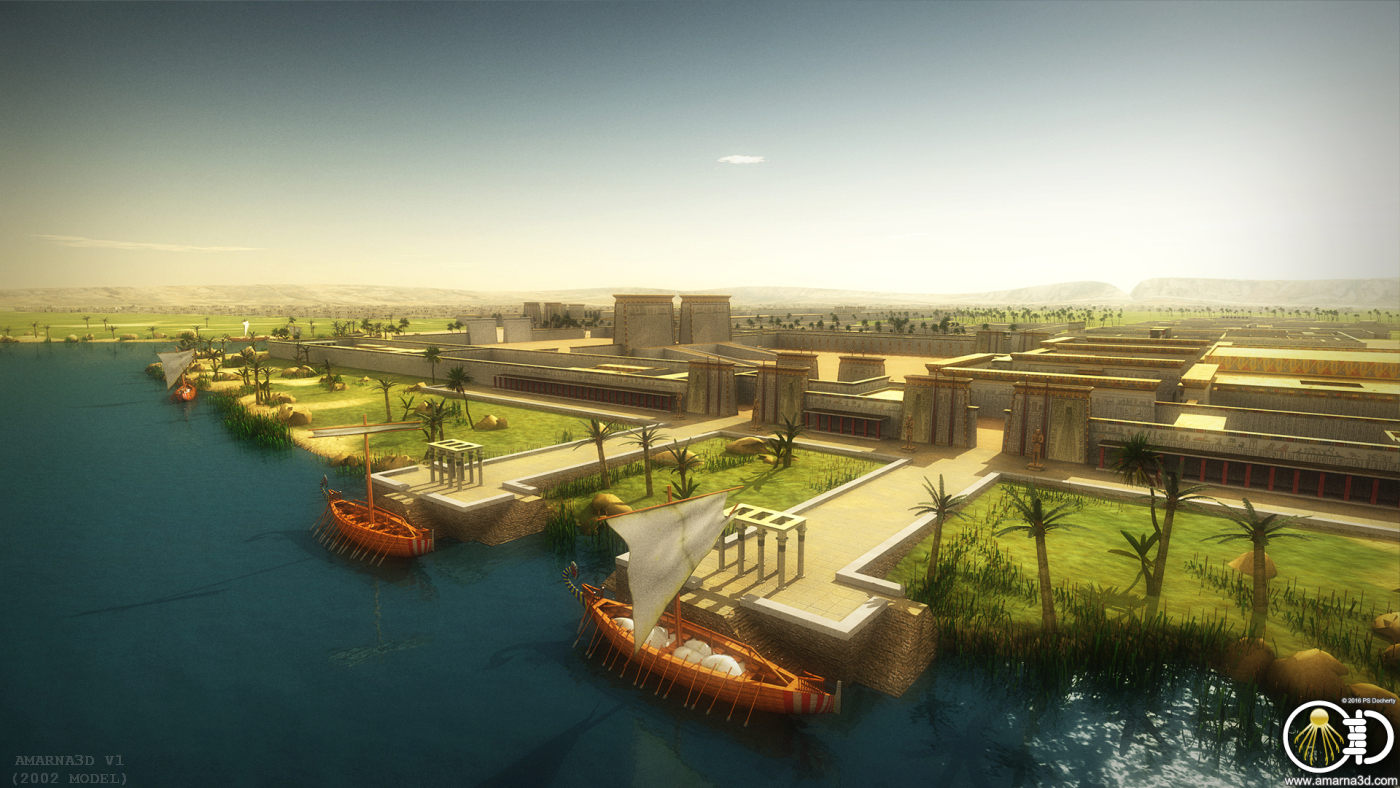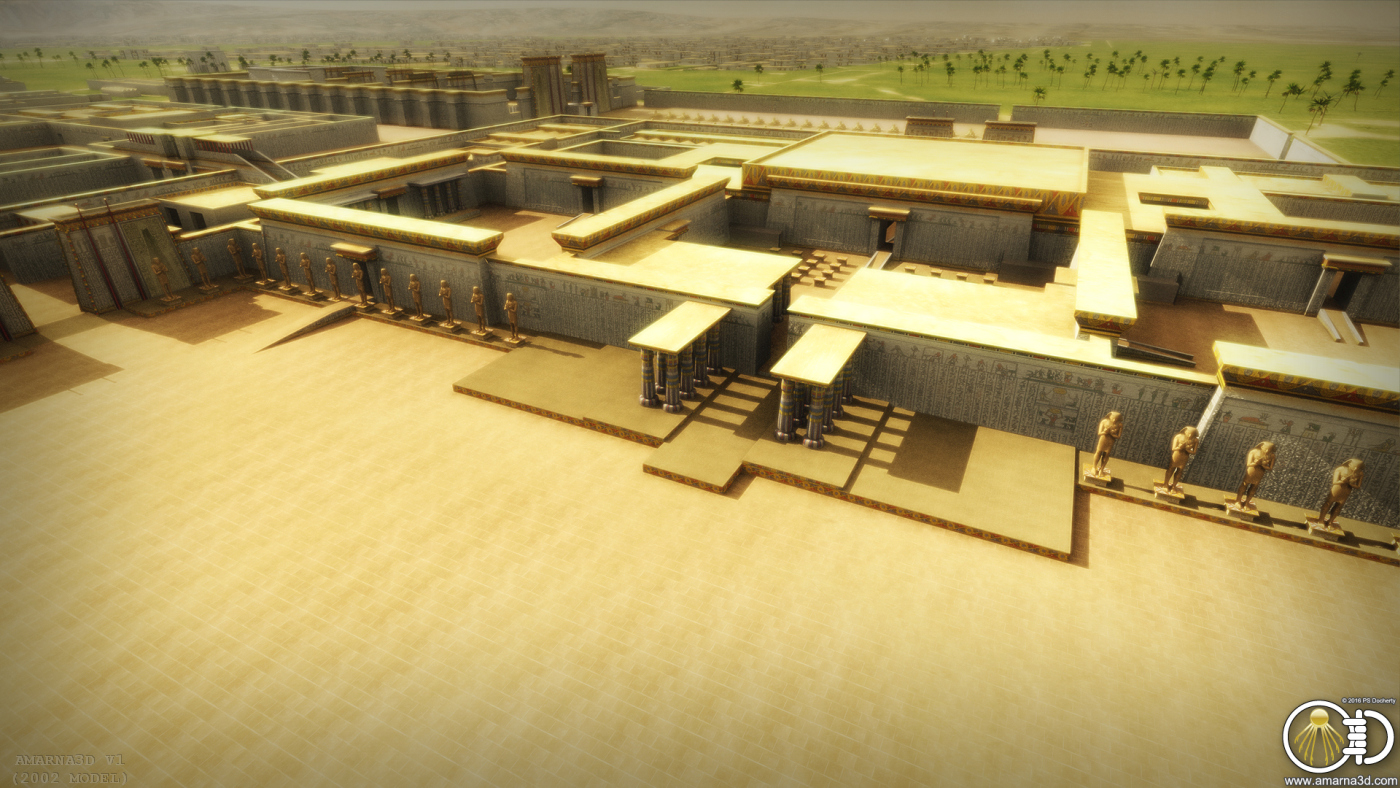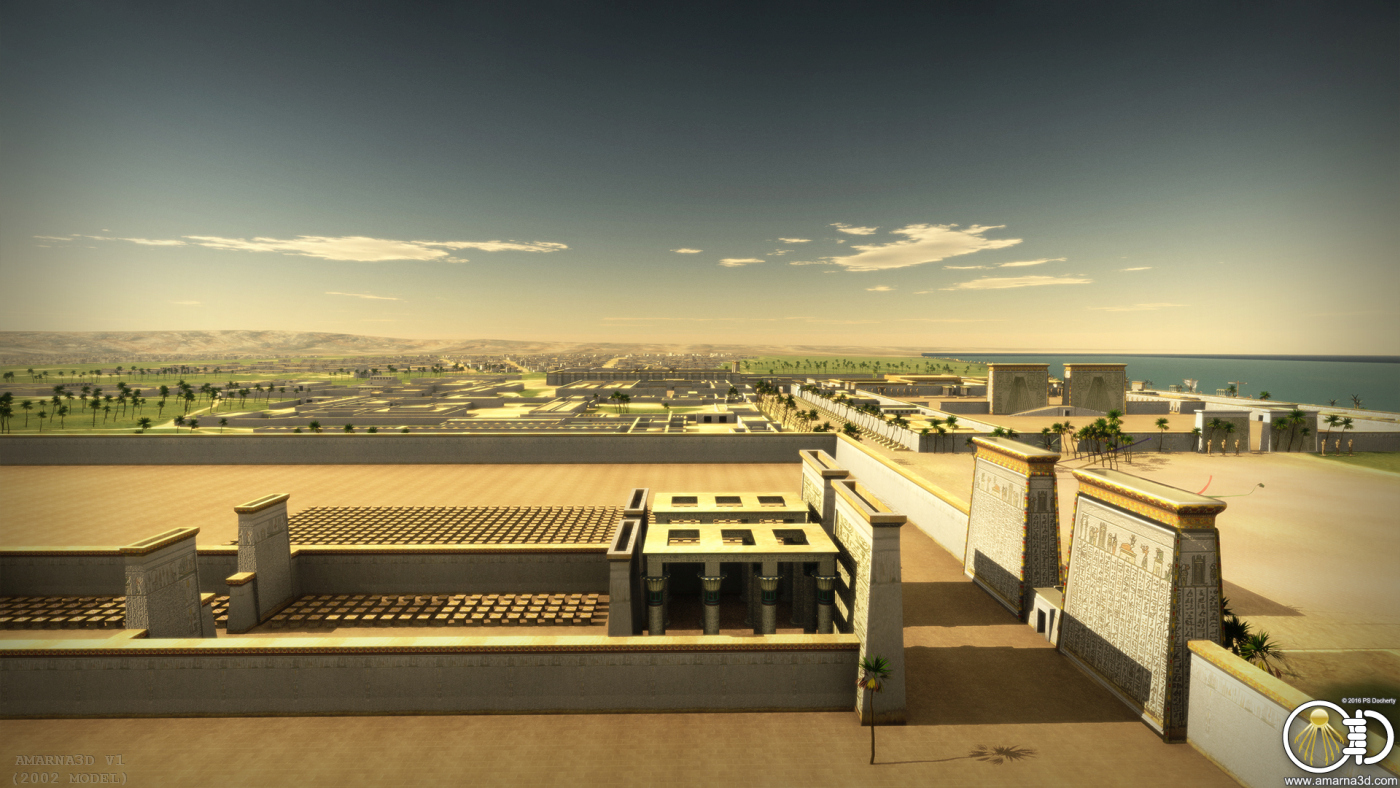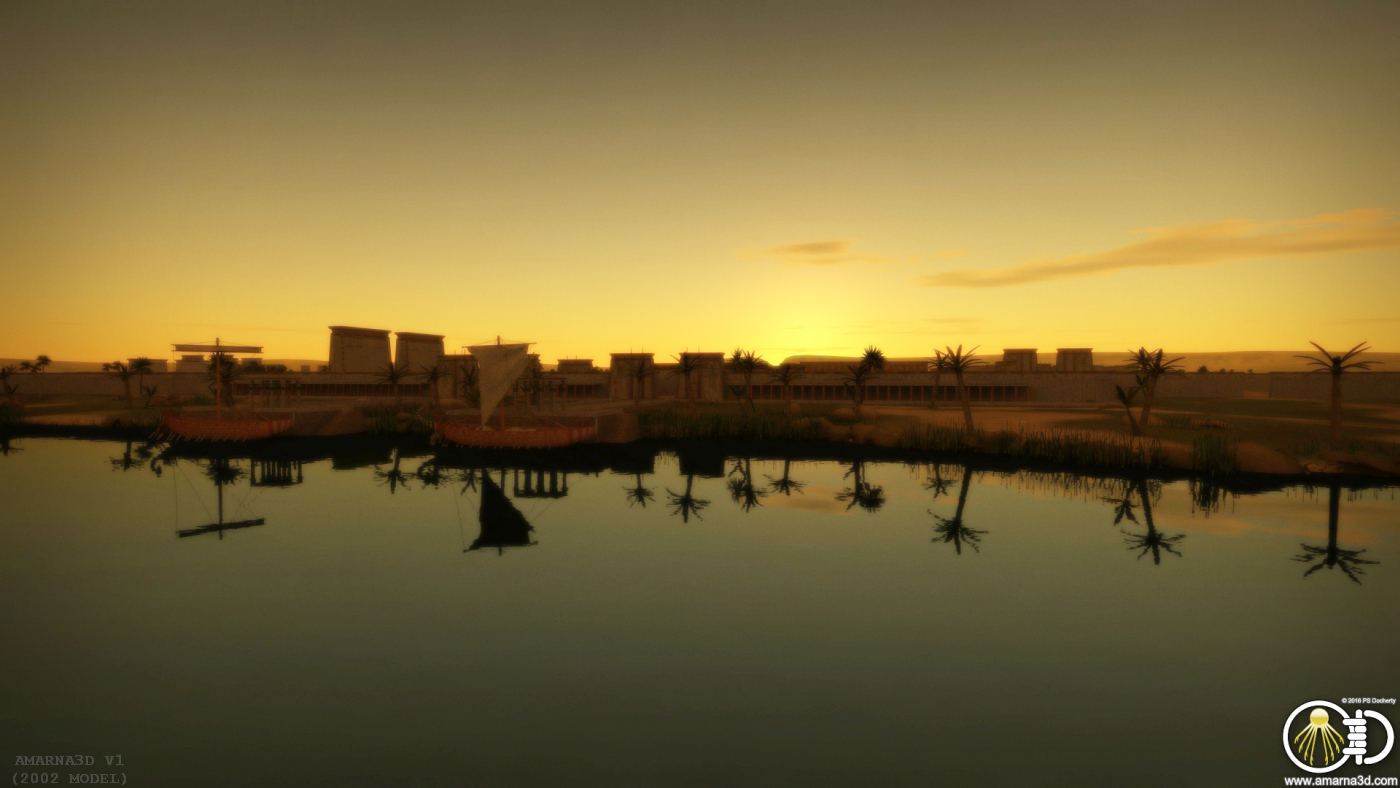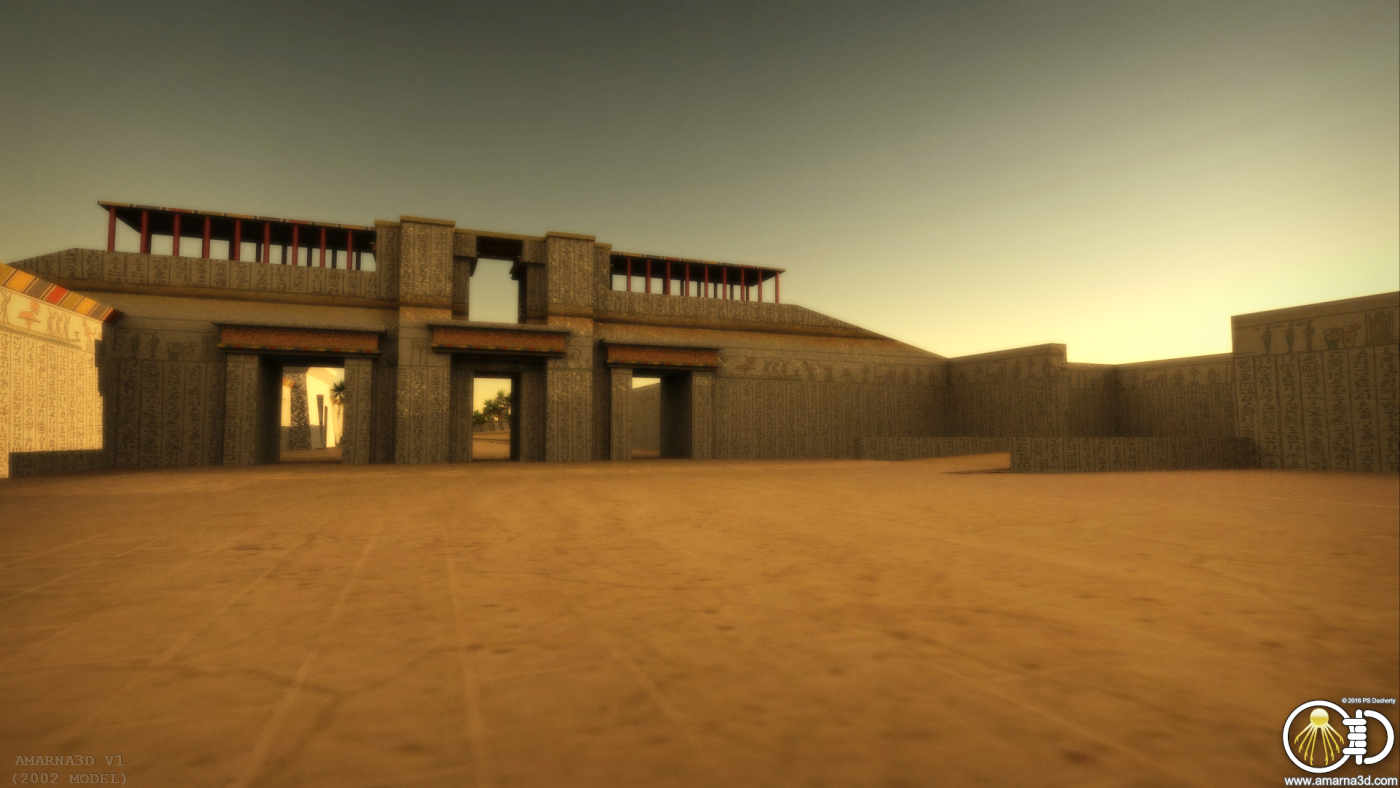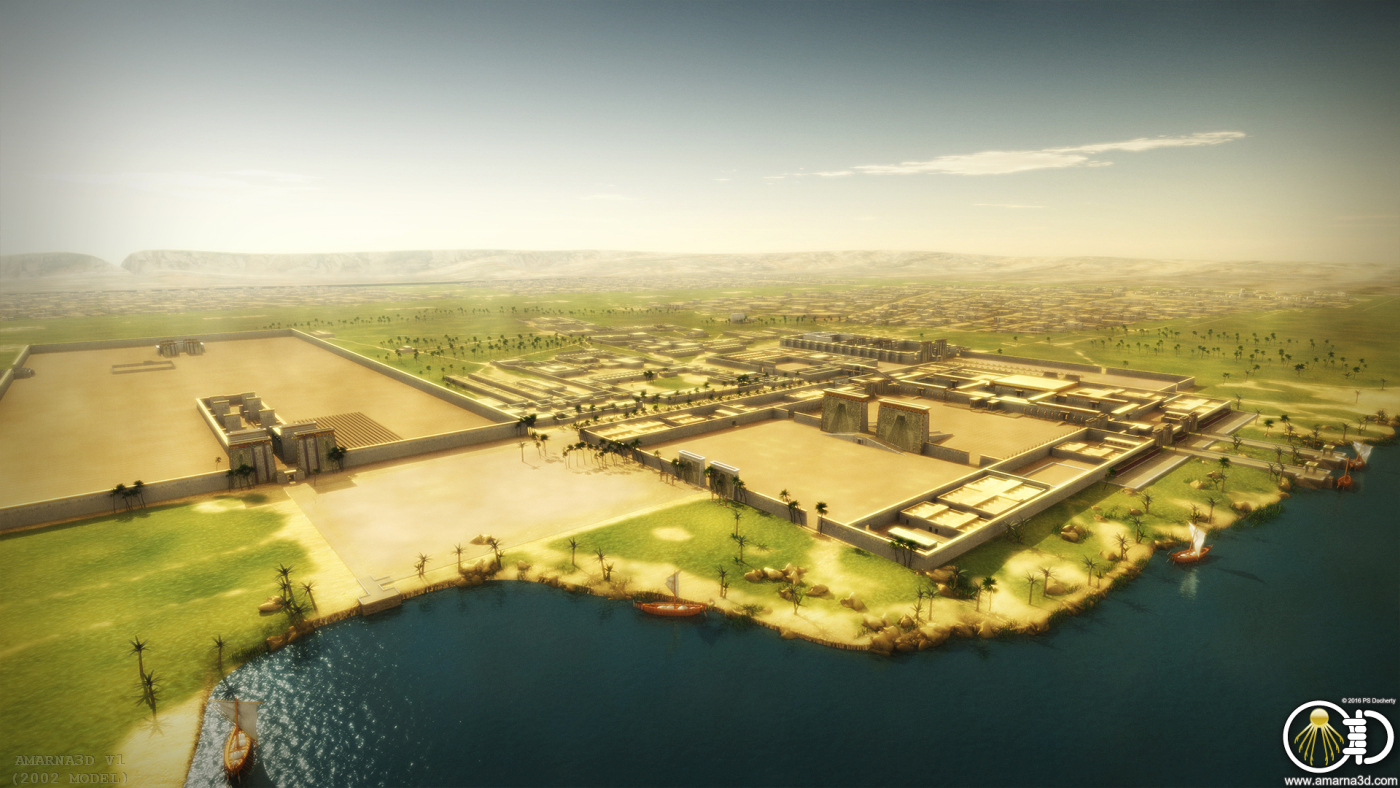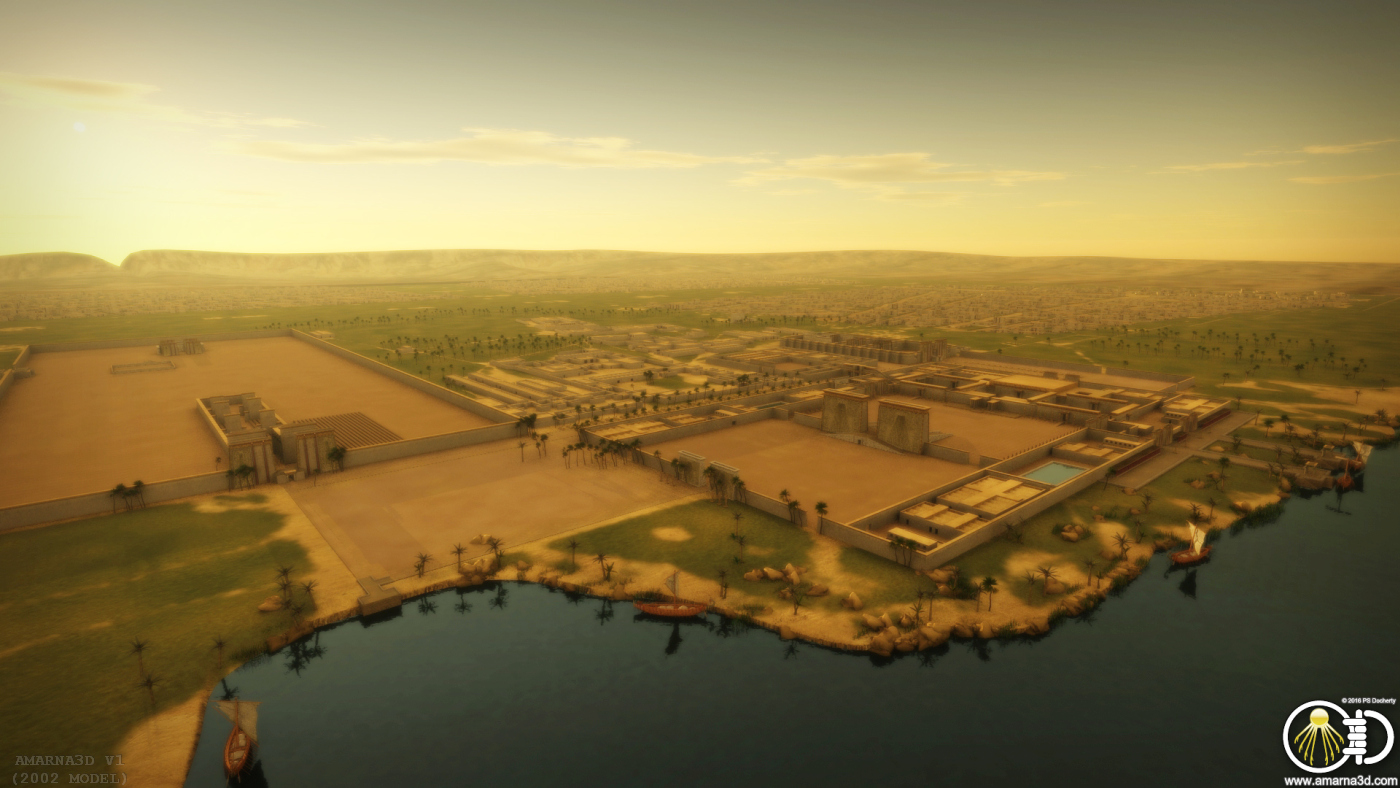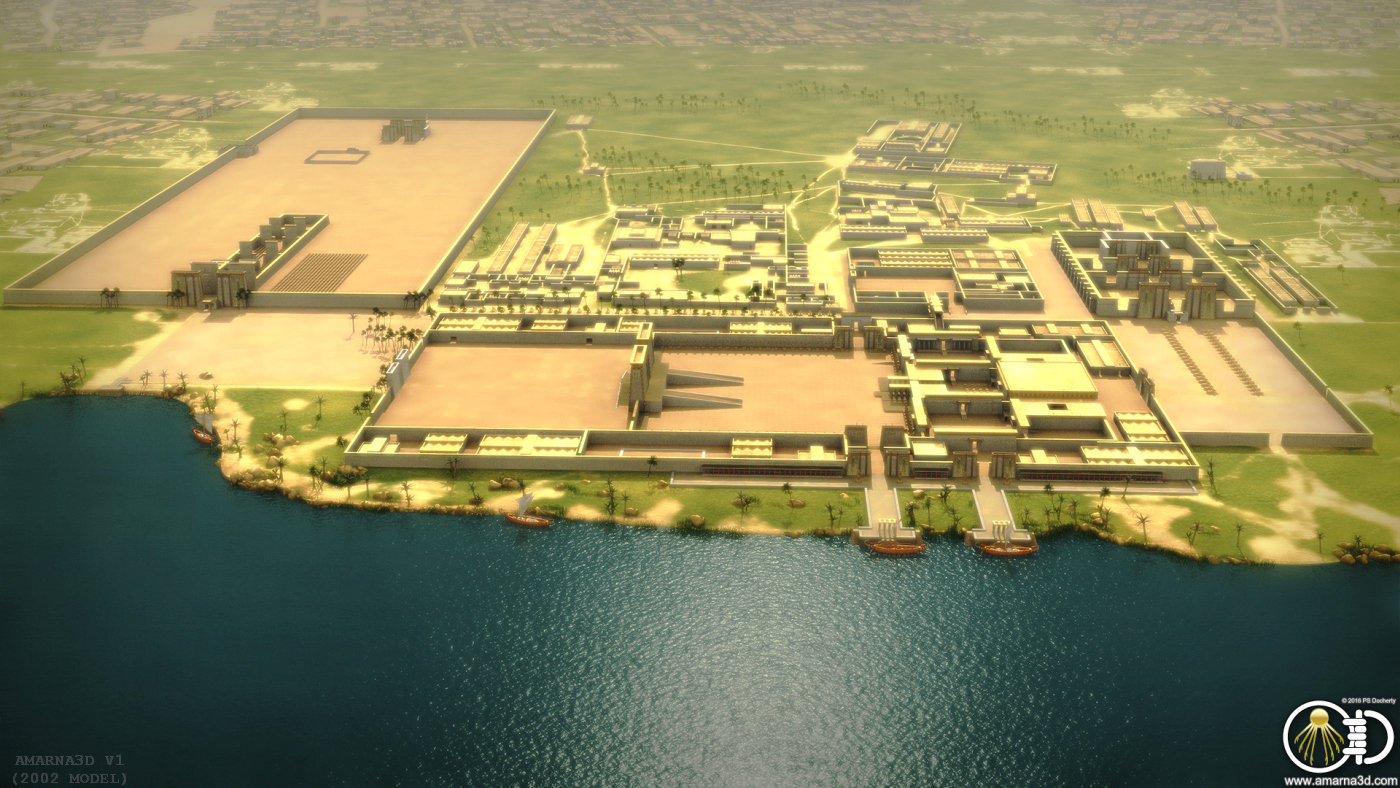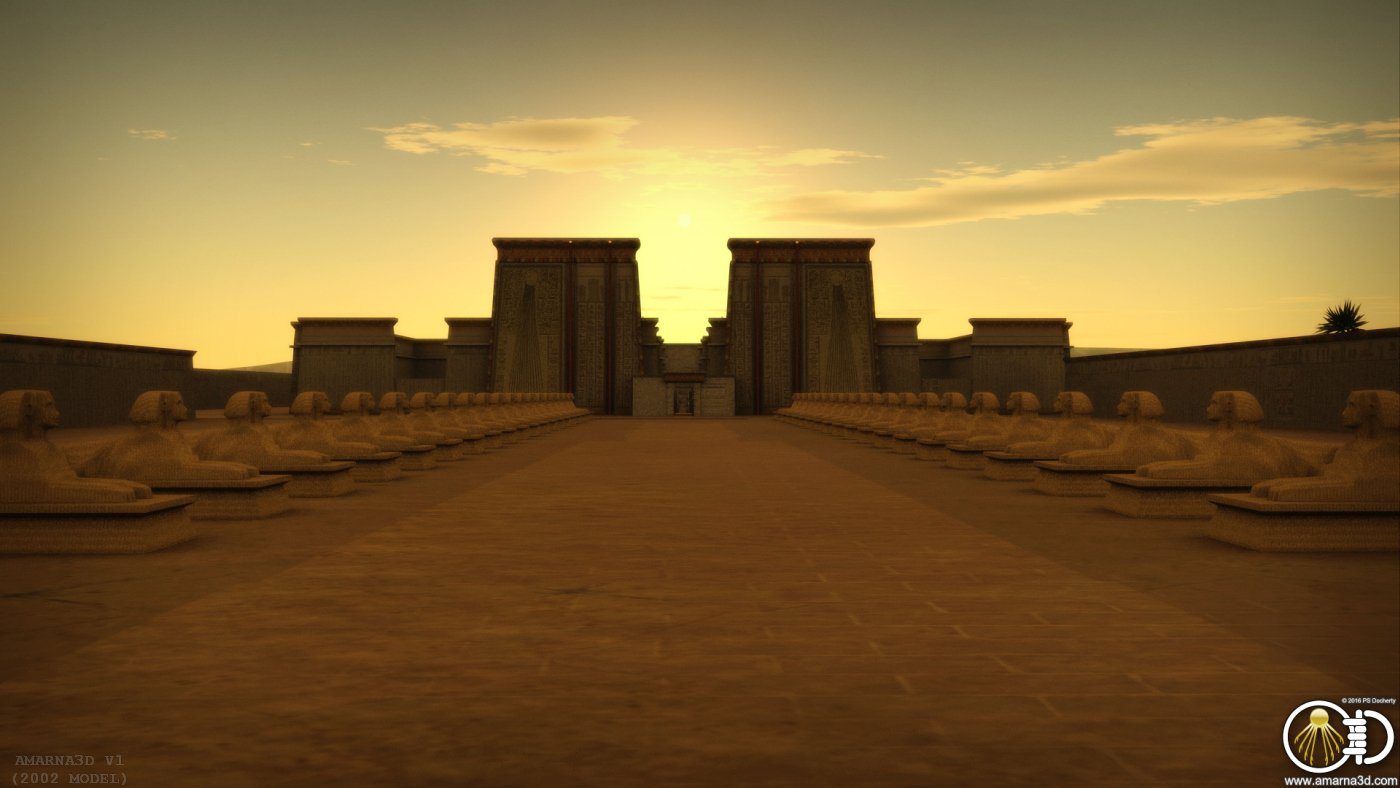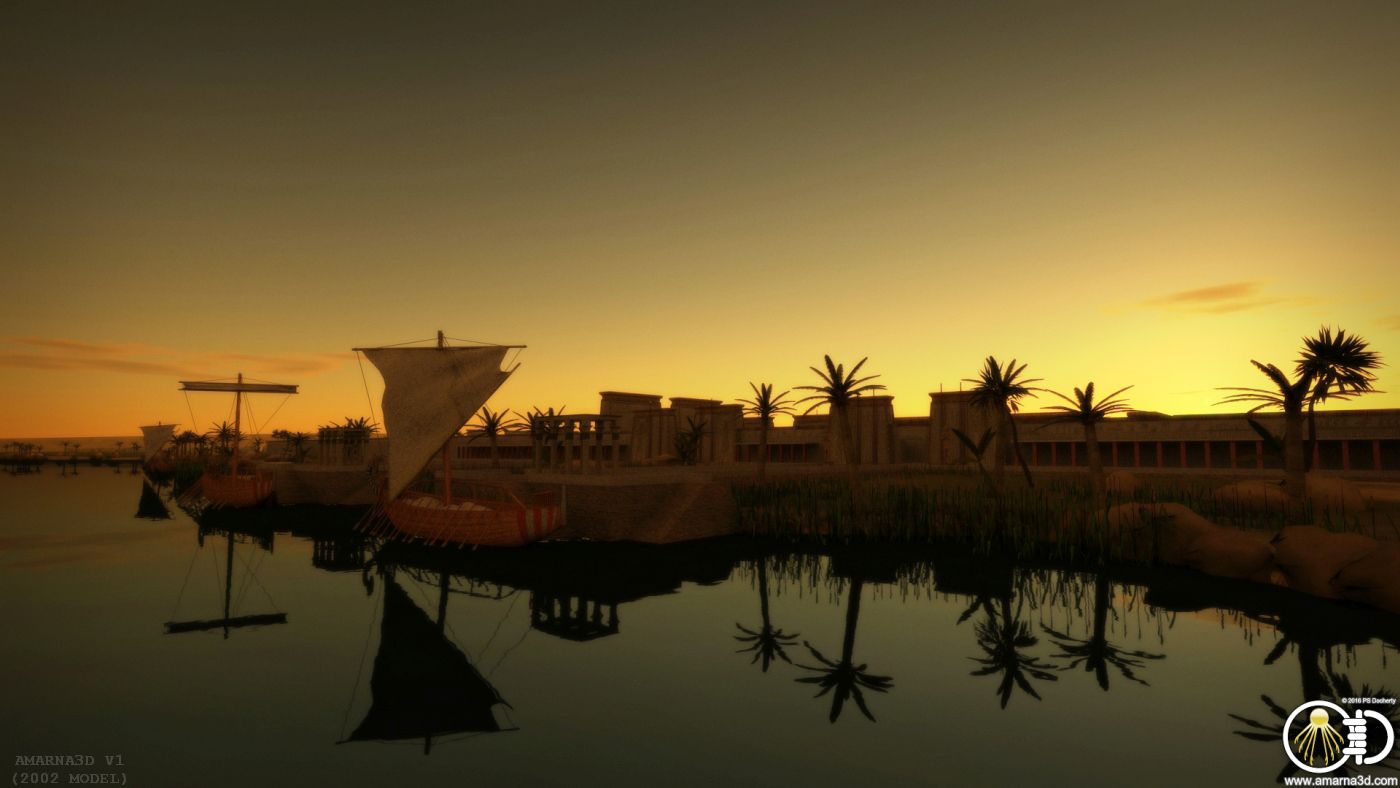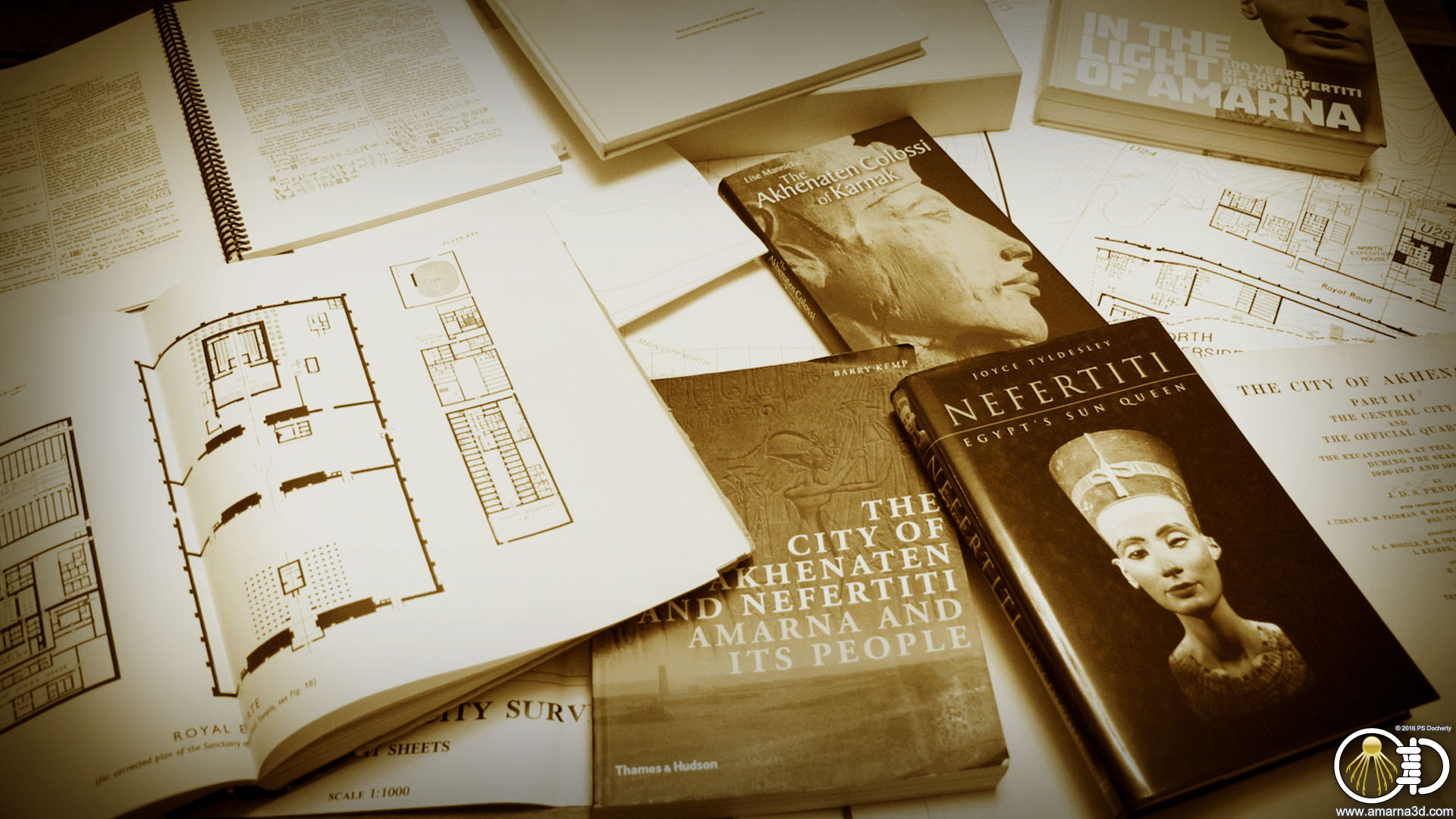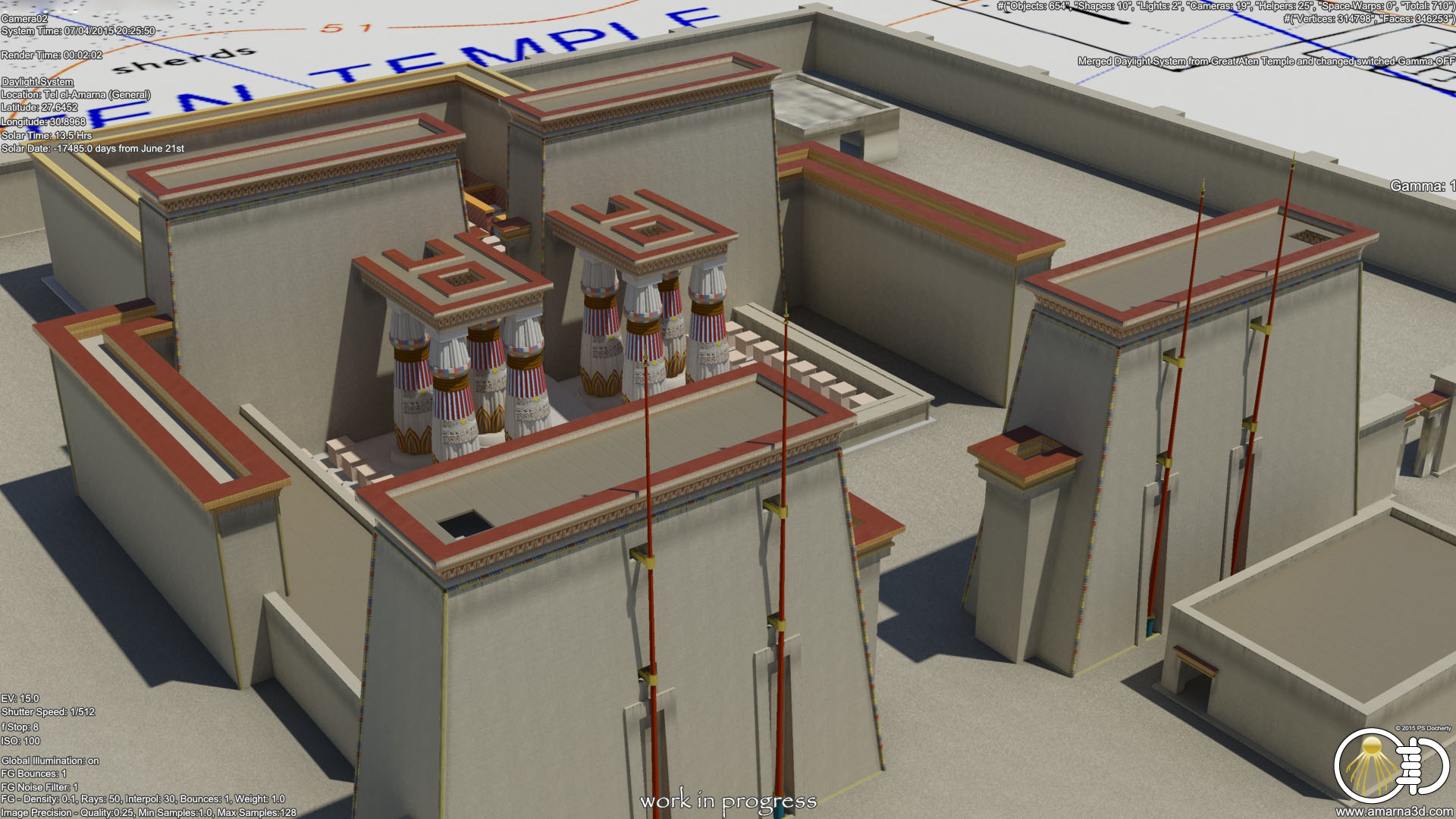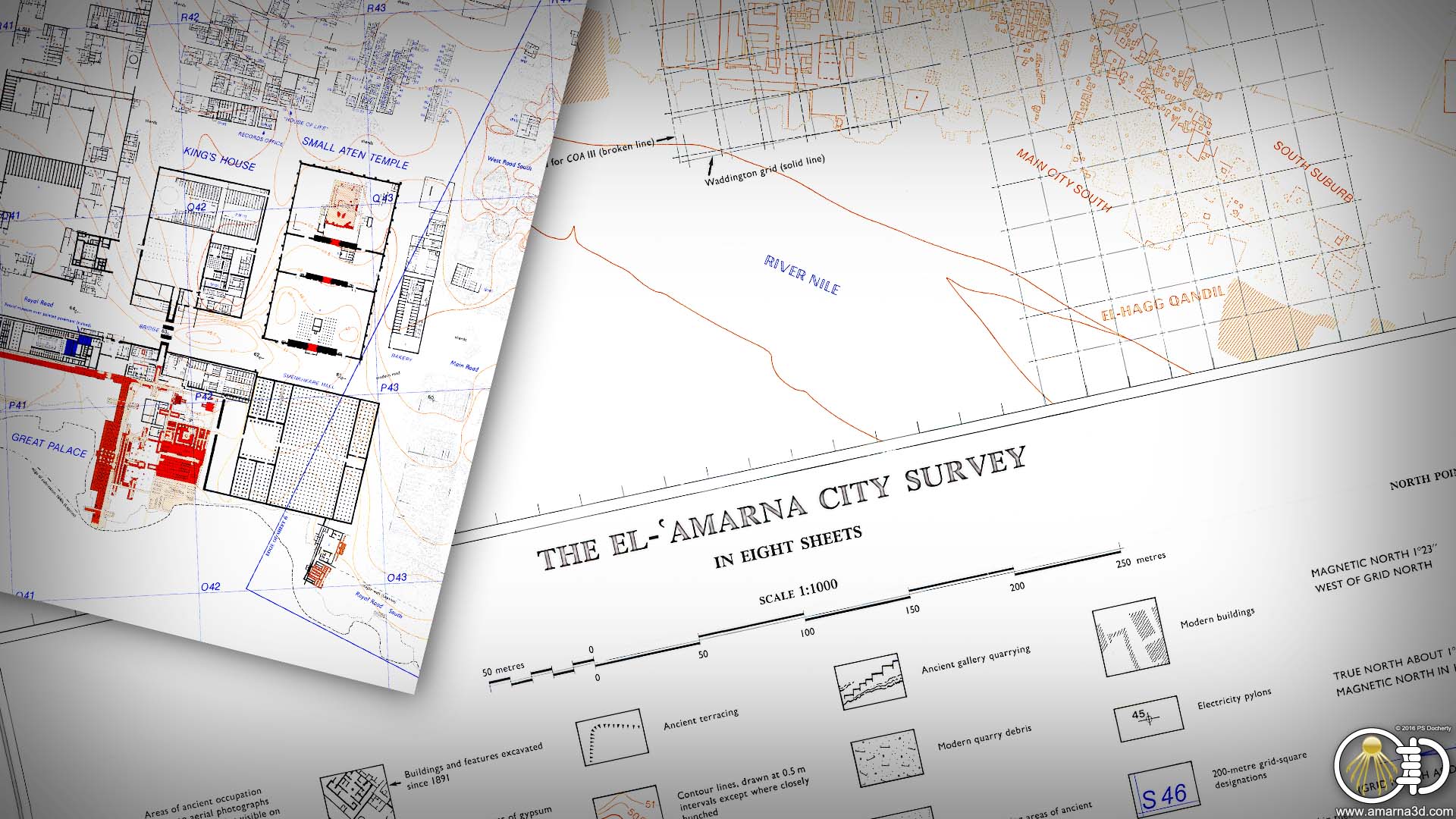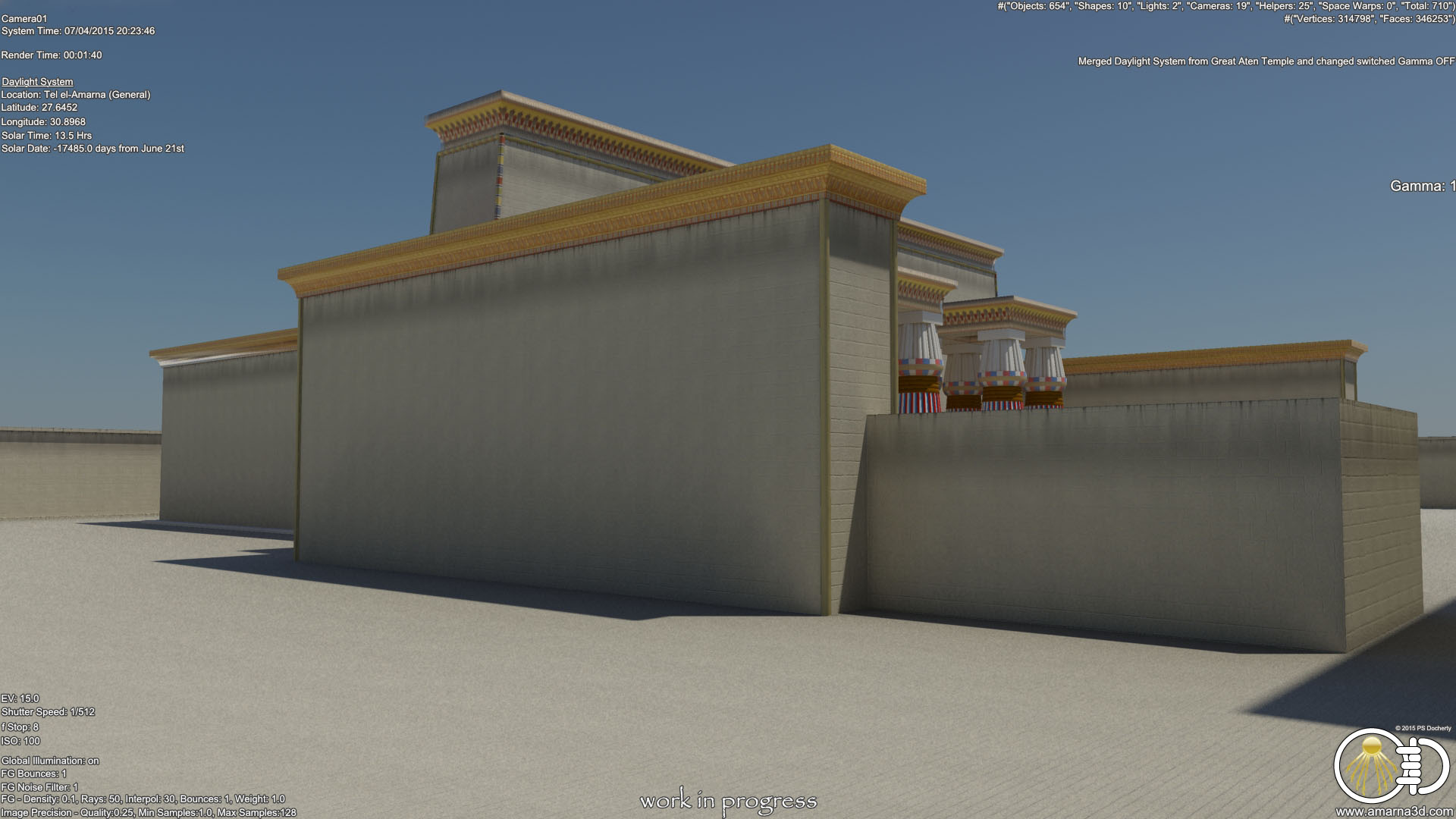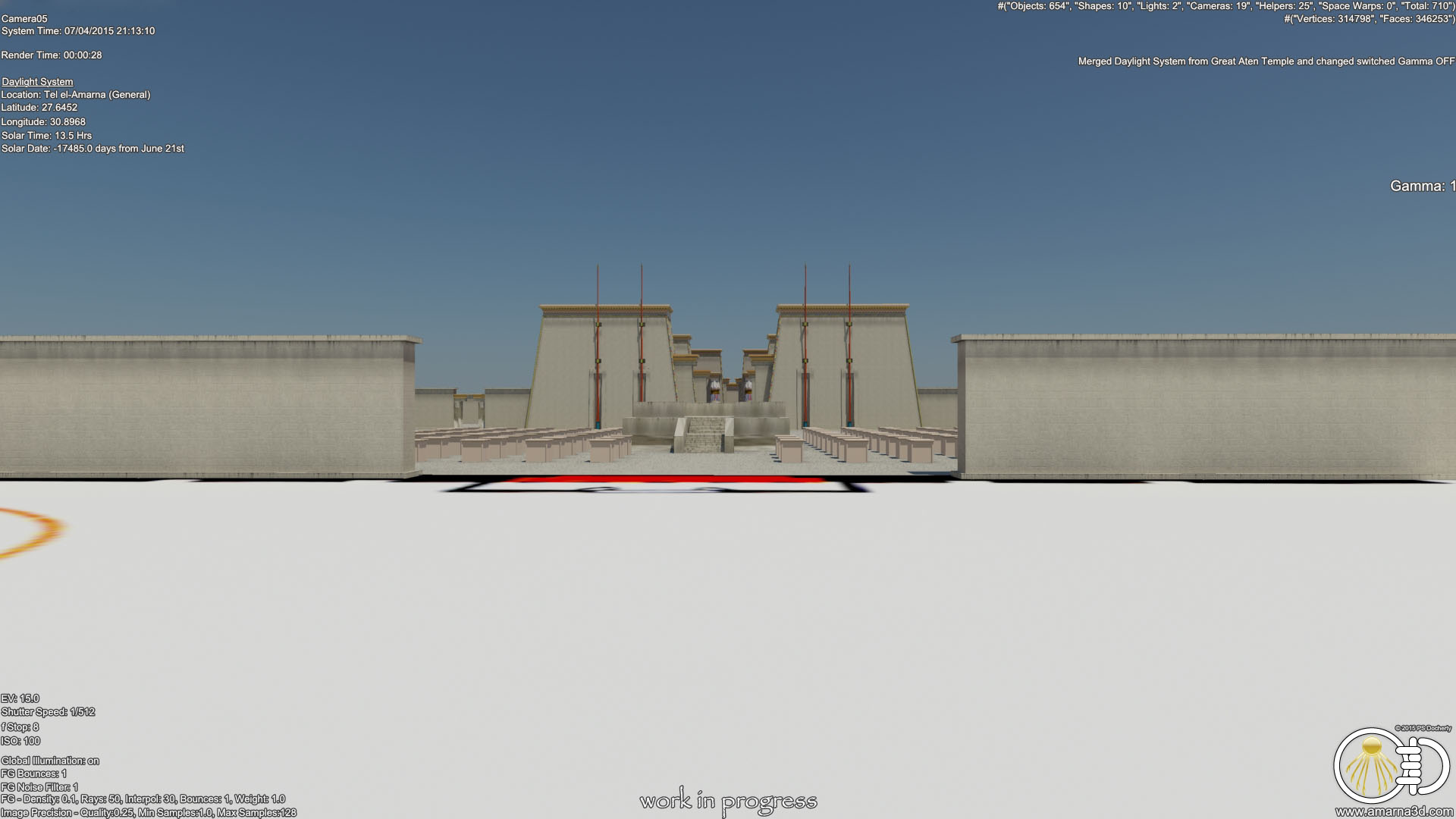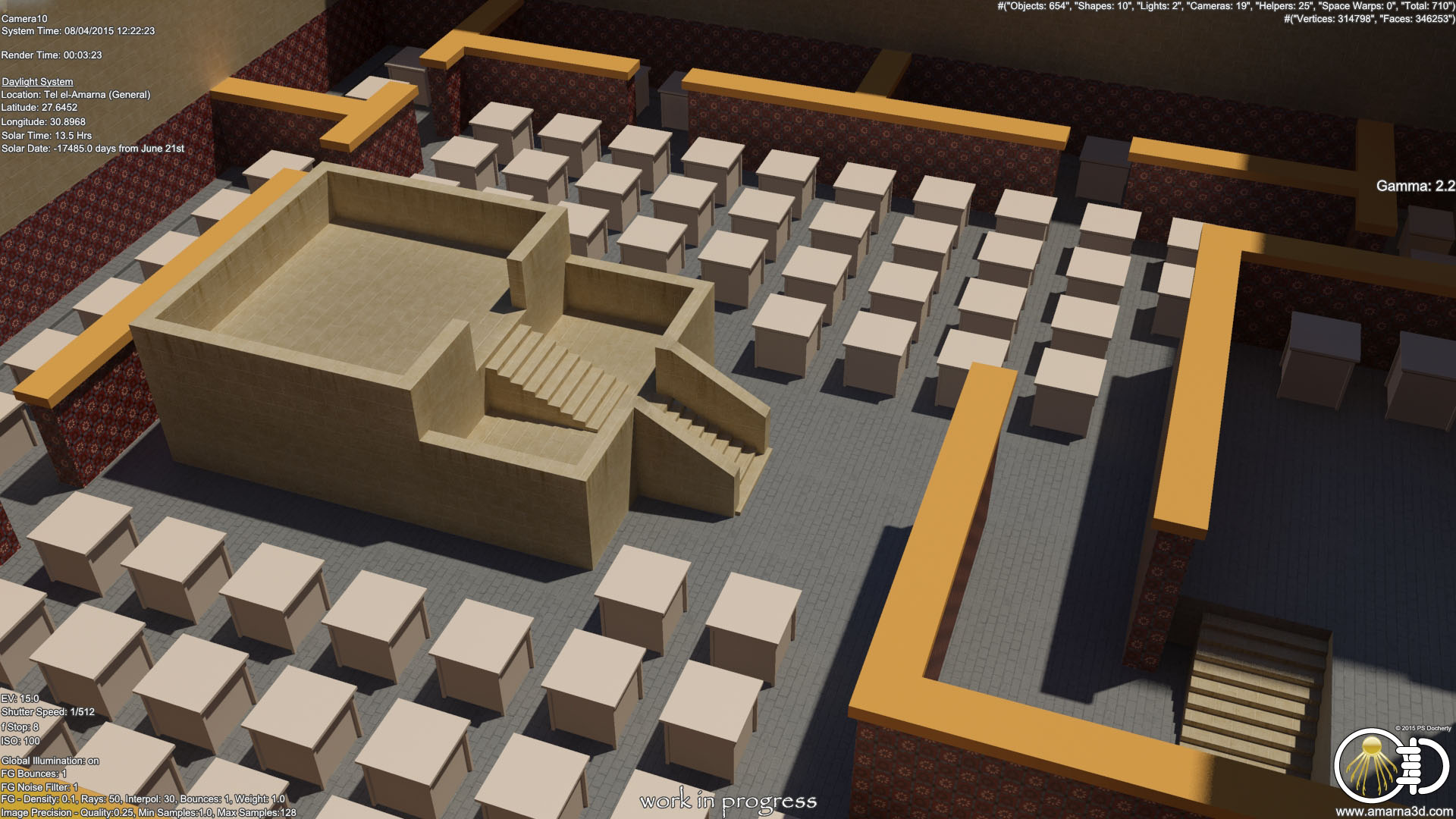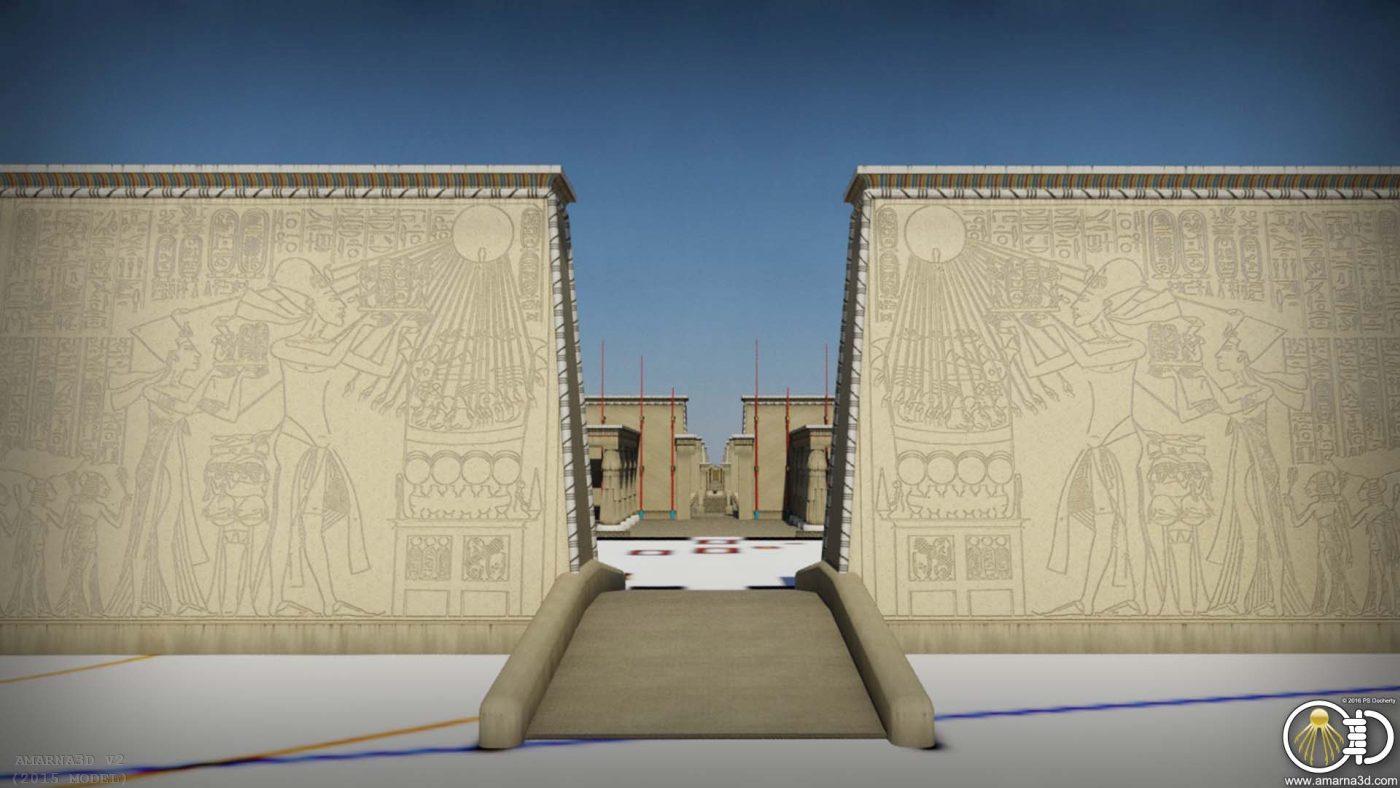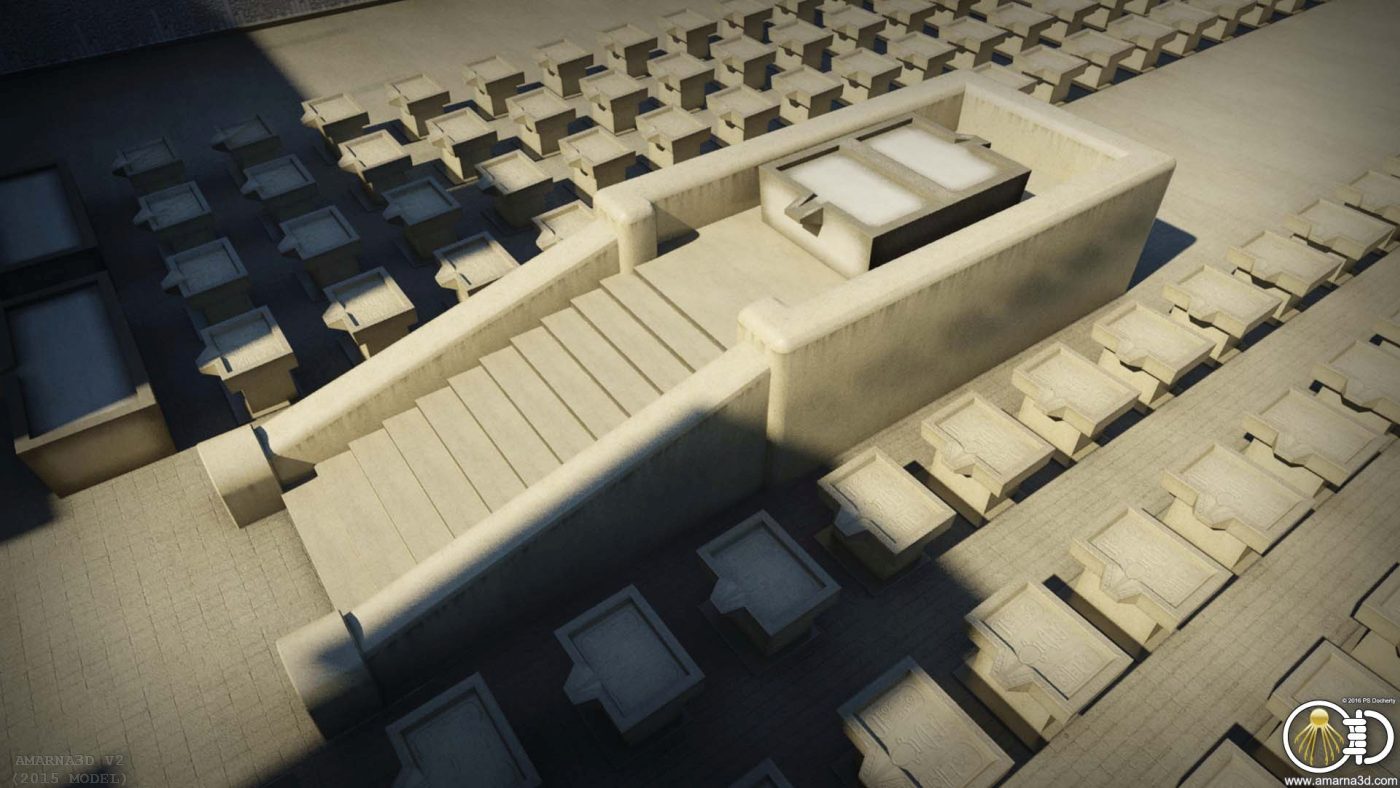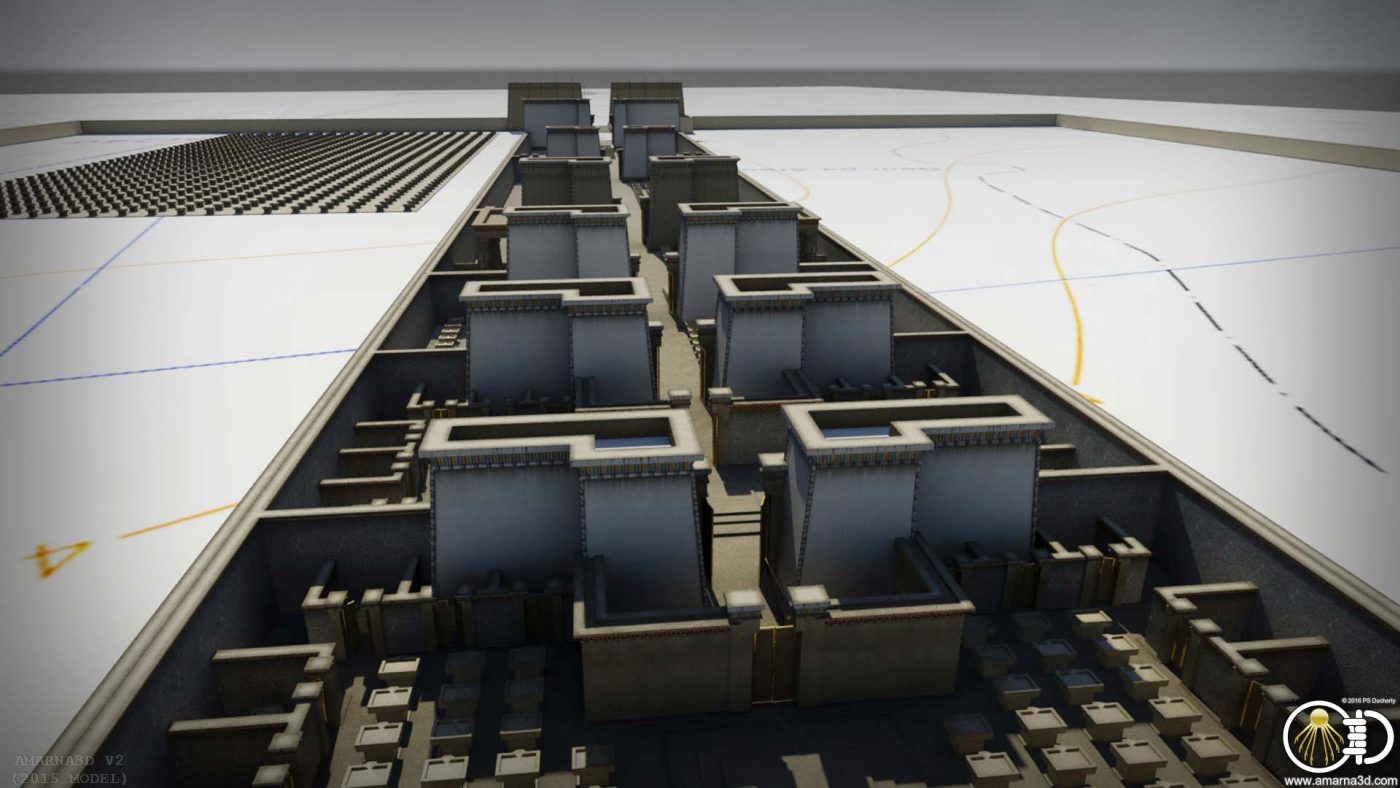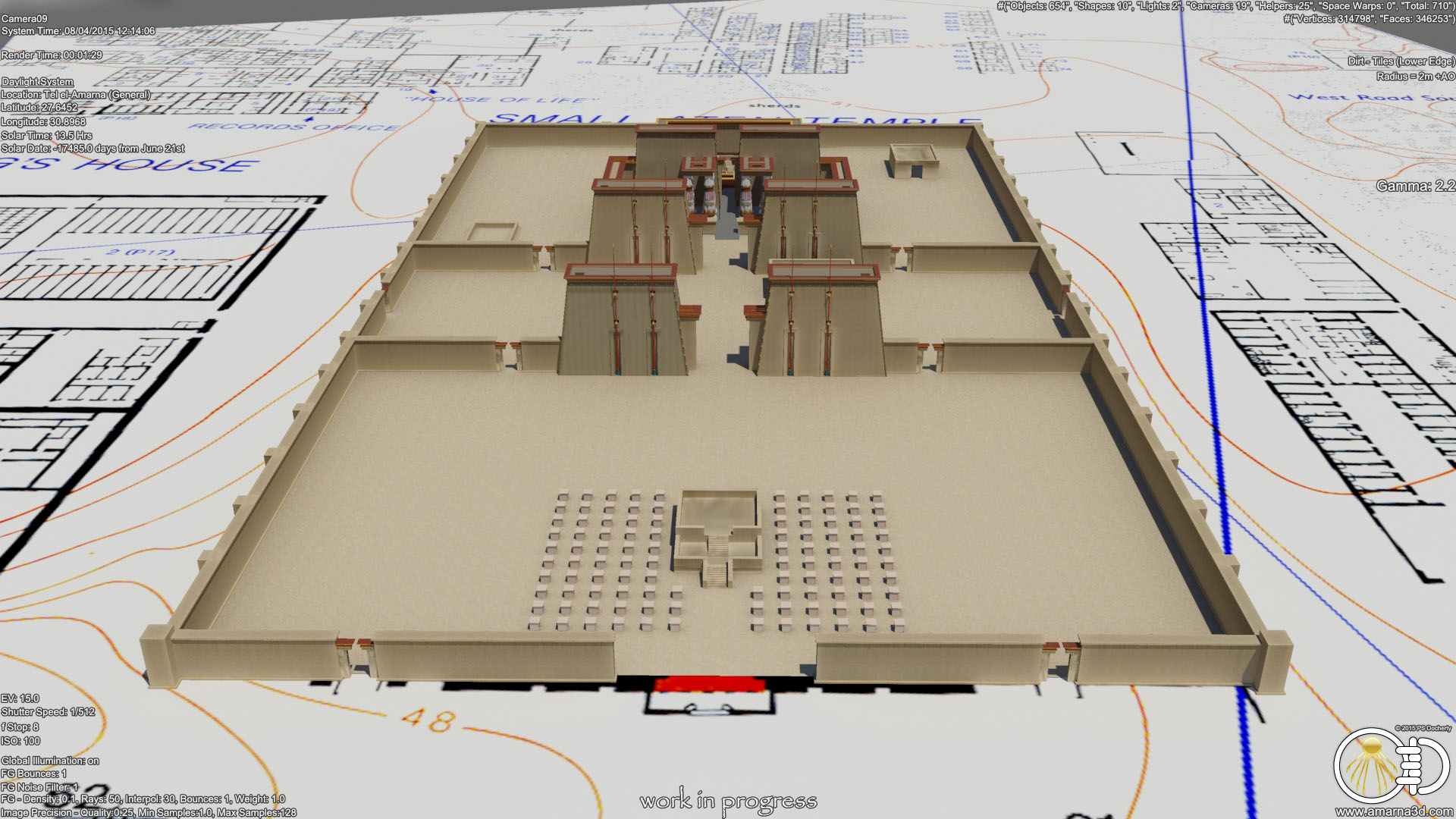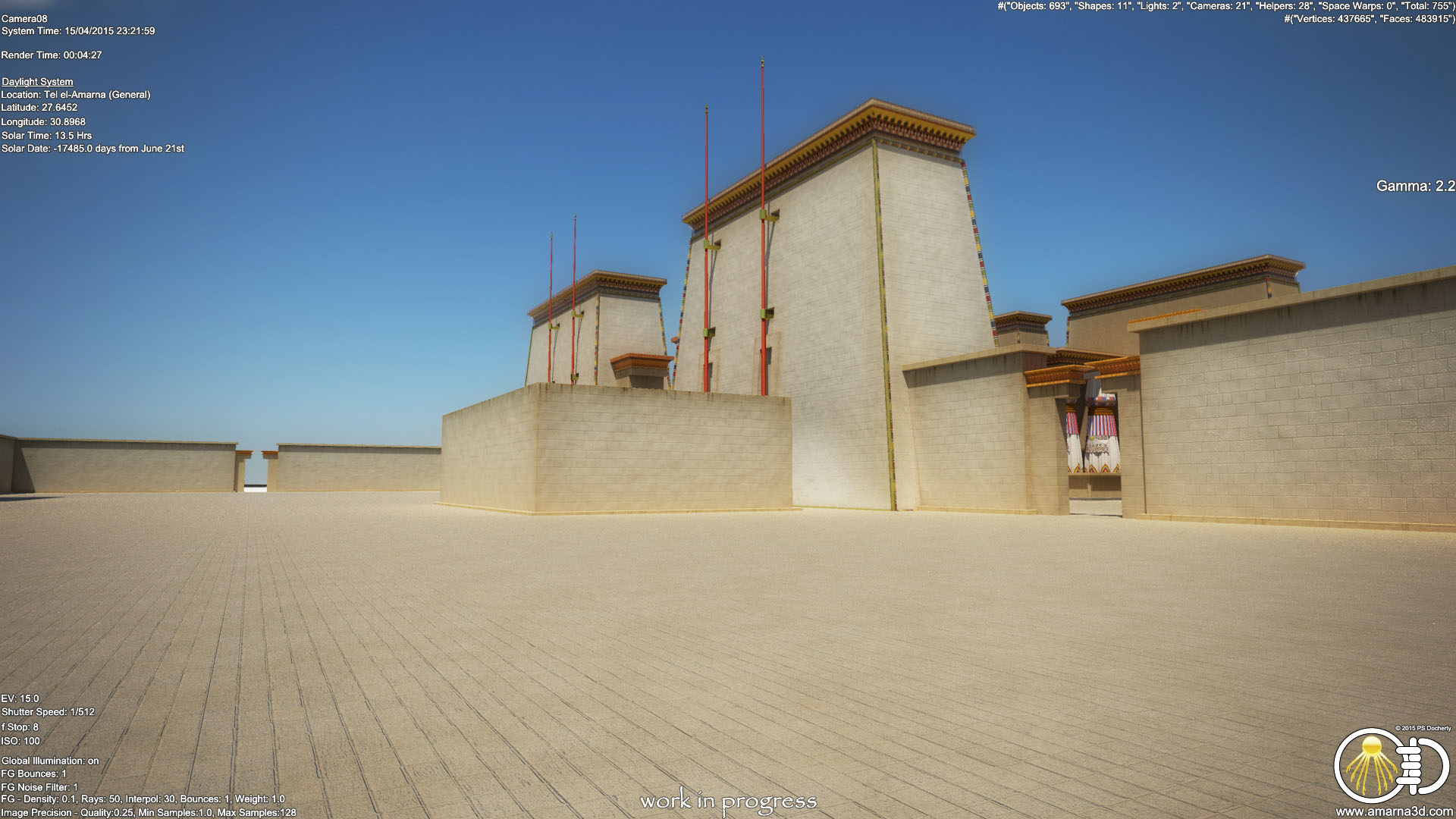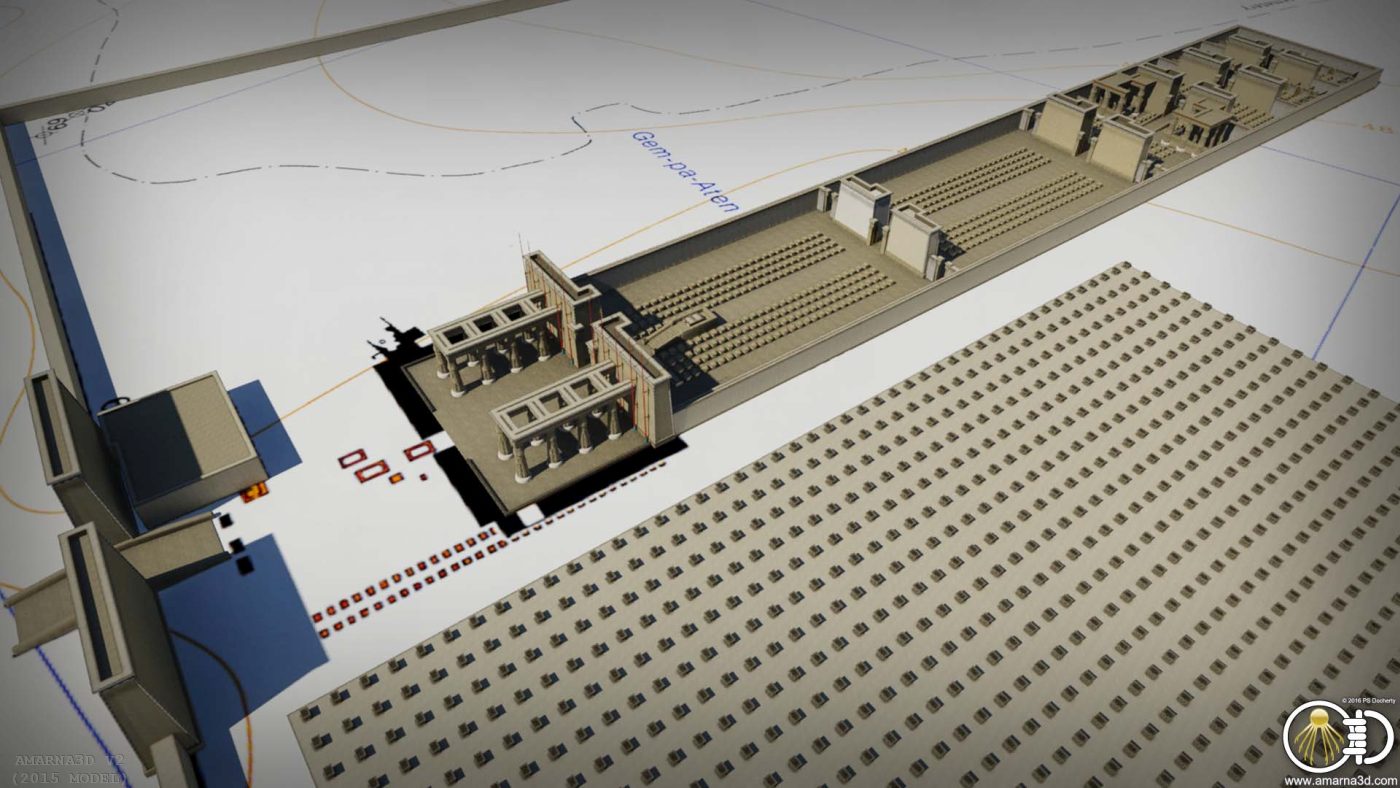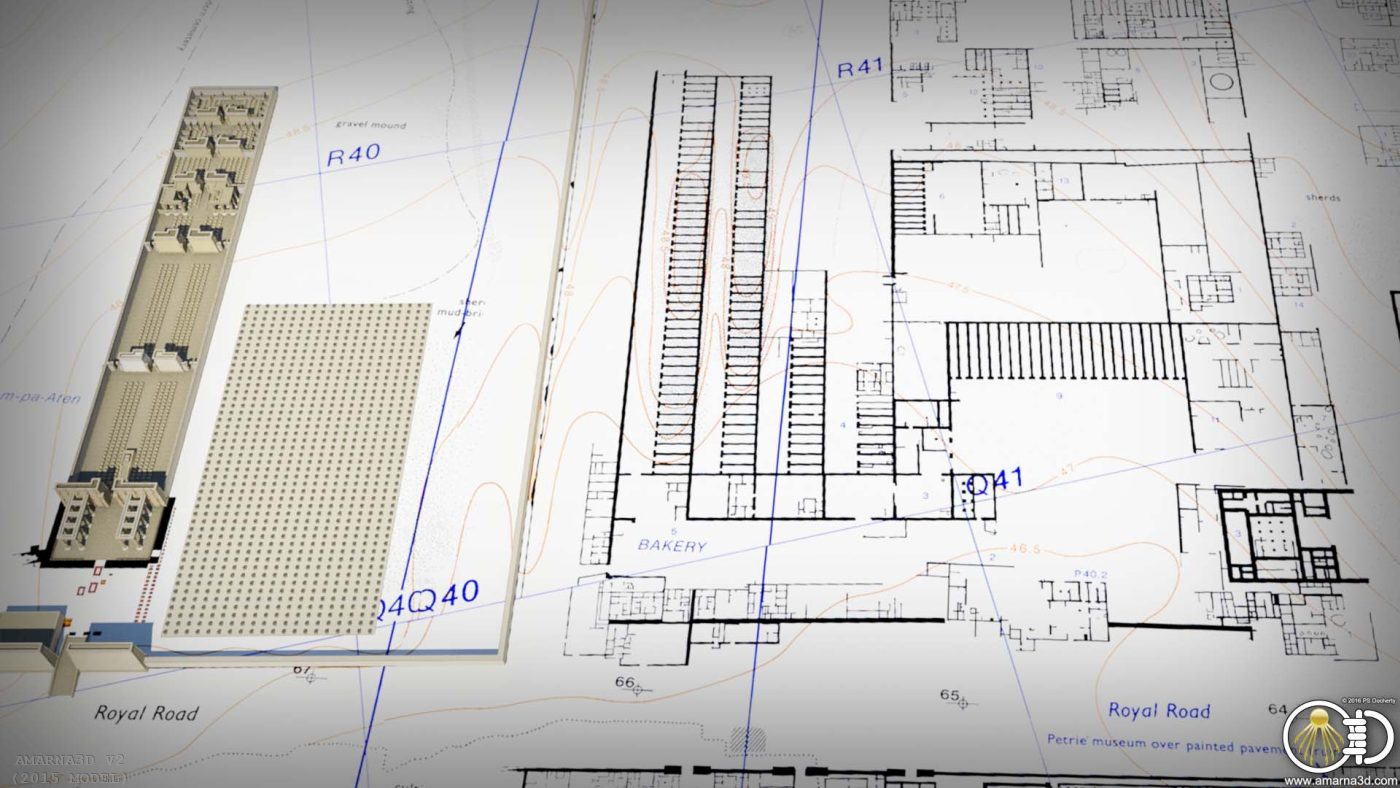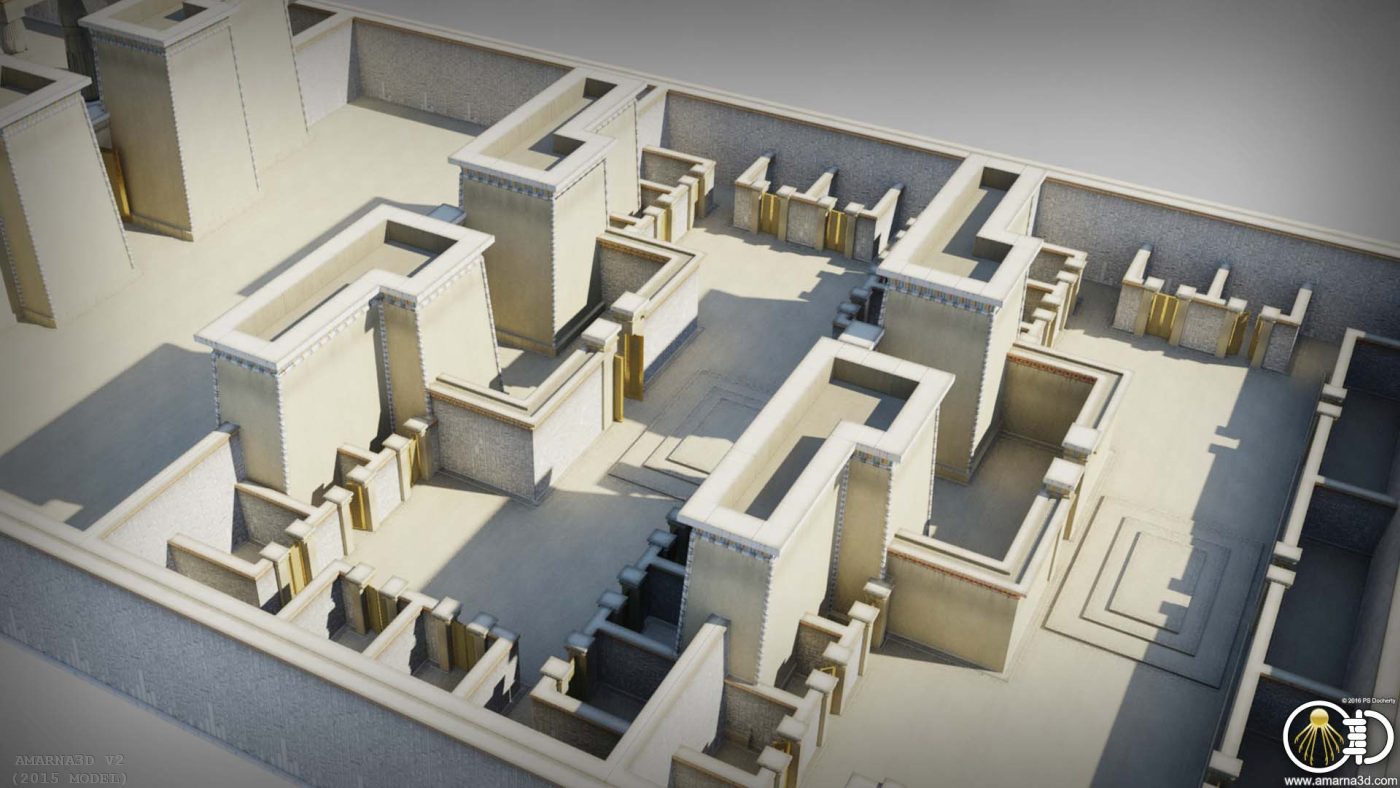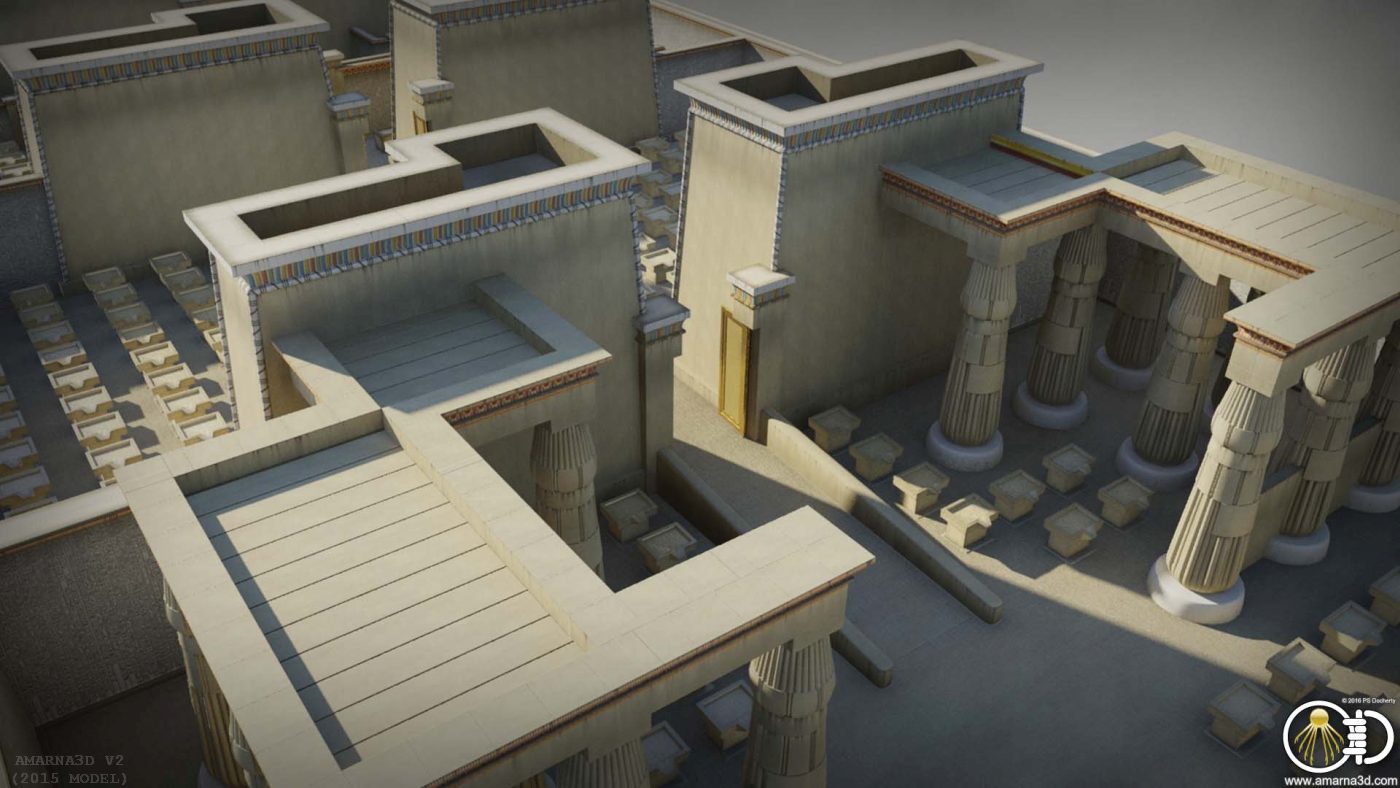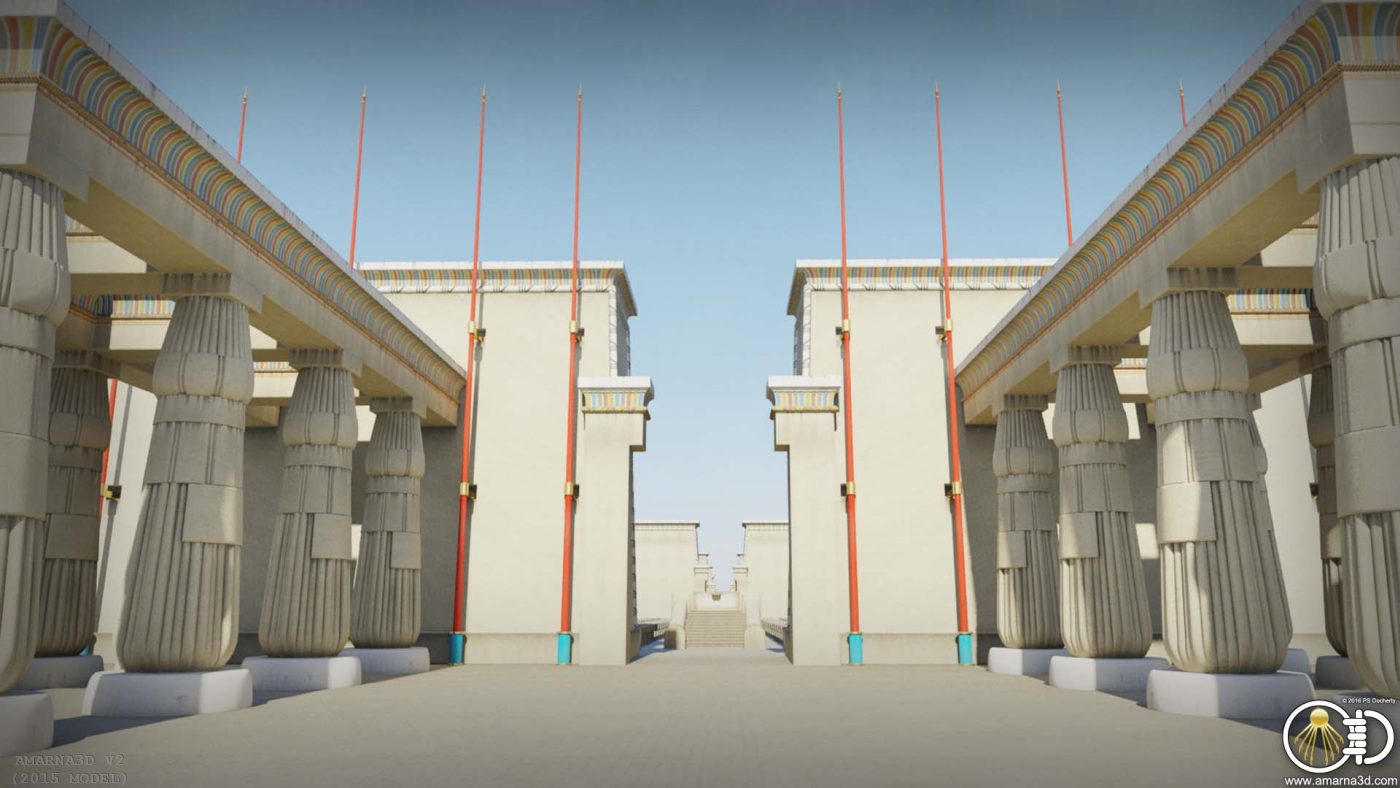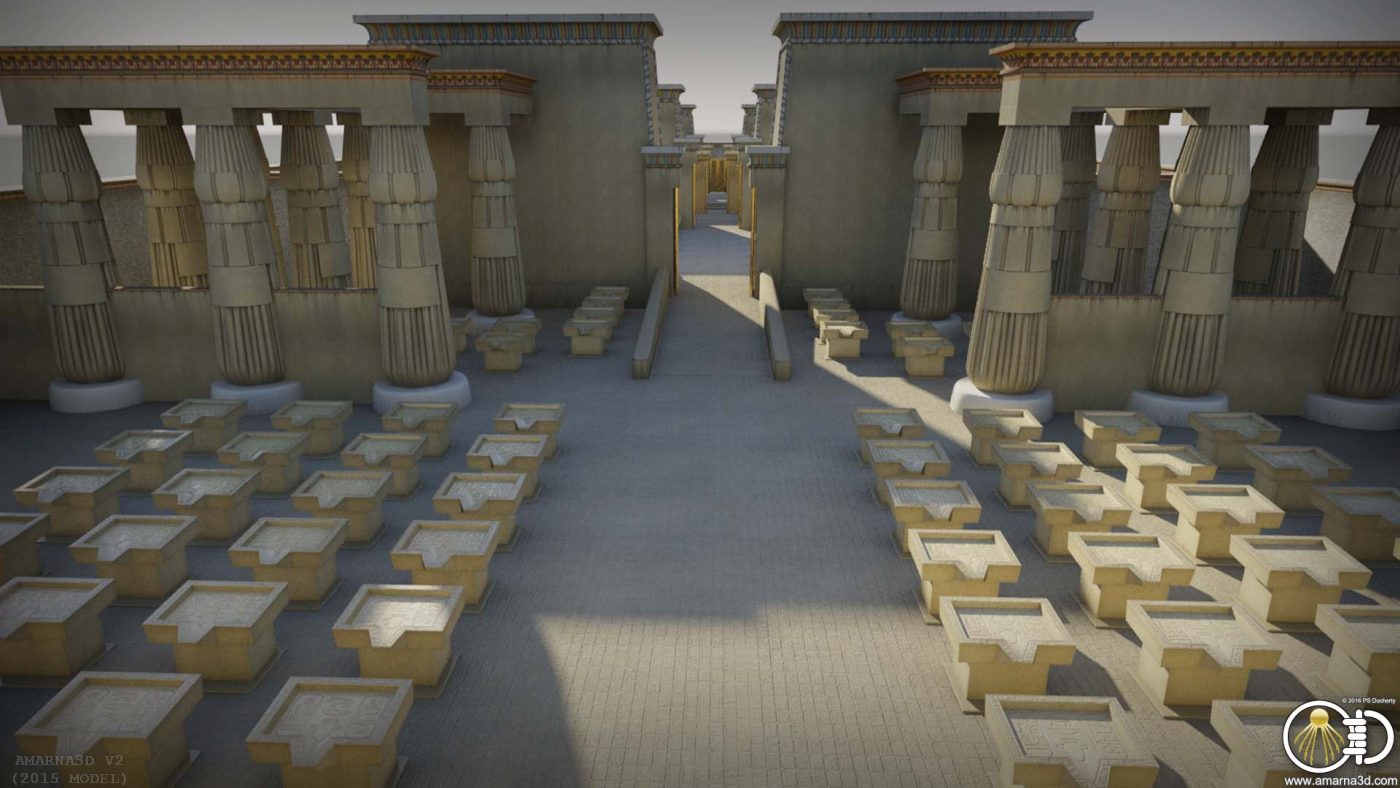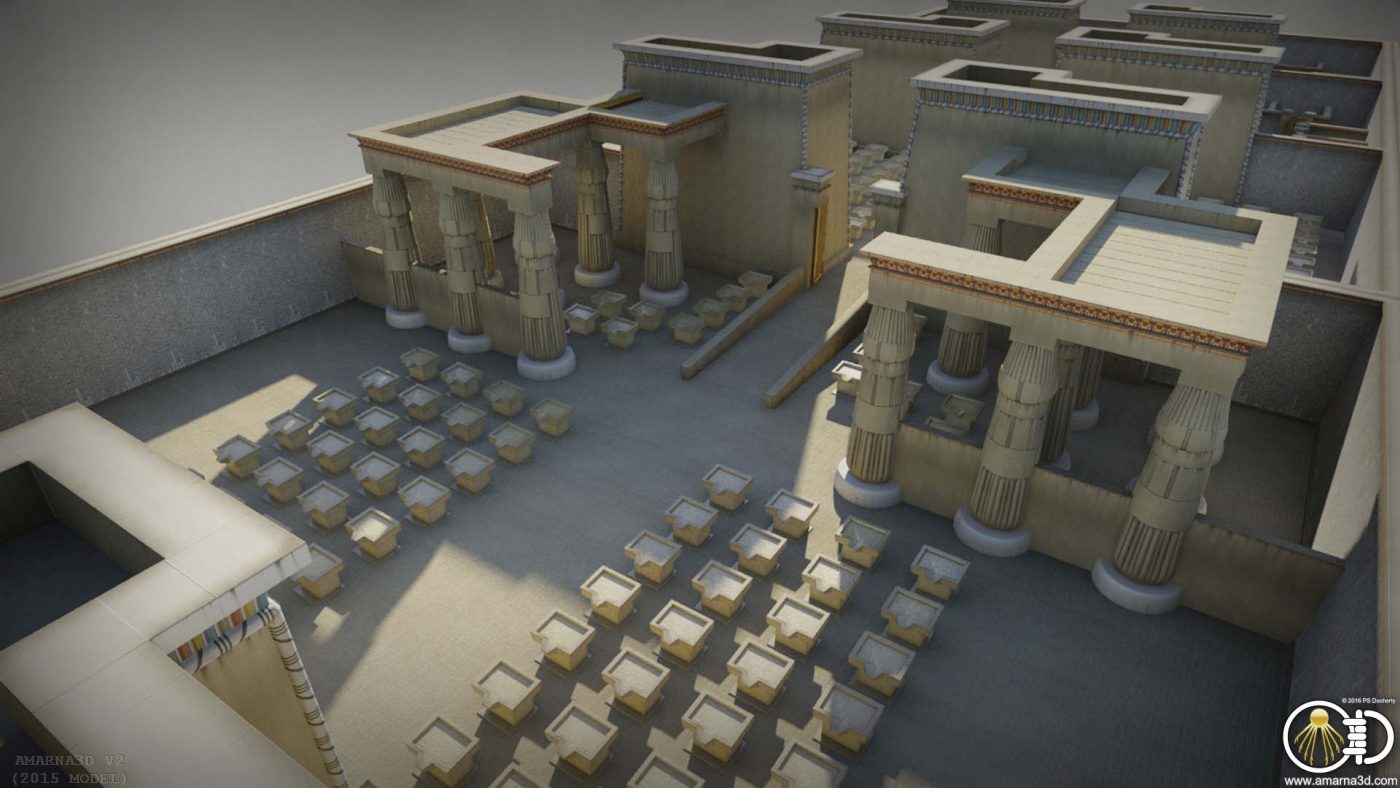What is the Amarna:3D Project?
The Amarna:3D project began as my personal research project into computer animation in 2001. The aim was to construct a virtual recreation of the main city complex of the ancient Egyptian city of Akhetaten, presently known as Tel el Amarna, for use within a documentary style animation. The 3d model was to be constructed within Autodesk 3d Studio Max and all the non procedural textures were created and/or manipulated within Adobe Photoshop. In addition to the city complex the model incorporated various animation systems such as crowd simulation, atmospherics, advanced lighting and cloth simulation. Foliage was to be added, but due to the added performance problems, density and coverage was kept to a minimum. It has to be said that at the time this project was first visualised the hardware and software had many more limitations than we see today. The whole model ended up being 4 million polygons and was developed using a laptop with 16Mb (yes Mb’s) of RAM. It was constructed over a 2 month full-time period.
The project investigated how much data one person could uncover about the city and its place in history using published material from books, the internet, and through film footage within existing documentaries. The background research was limited to 2 weeks in order to fit within the project timescale; which by default limited the scope.
Finally, at the end of the project this data was compared with the official findings of the Egypt Exploration Society, who are the current surveyors of the remaining site, in order to see where further improvements could be made in the future.
The initial AMARNA:3D Model
Version 1 (2002)
The first version of the model was constructed within 8 weeks. As part of the design it was decided that the model would be developed for distance viewing. When constructing any 3D model there are a few factors which influence the overall design. If the coverage is large then detail will need to be reduced in order to develop a manageable model. As this model was constructed on a laptop in 2001 the polygon count had to be kept under control, which meant that the ground level detail was designed to be low. This is evident in the ground level images of the King’s Bridge and road.
Texture size was also a consideration due to memory limitations. Procedural textures were developed in an attempt to reduce memory overheads and avoid visible tiling issues. However this can introduce longer rendering times due to the additional processing. At one point, before scene optimisation, render times were around 1 hour per frame for a 1920×1080 image.
Lighting was a big consideration as the city and temple structures were aligned with the sunrise. I therefore developed an initial pseudo global illumination system coupled with pre rendered backdrops. However later in the project I used a plugin (Dreamscape) in order to get more realistic lighting. This was very effective but unfortunately the plugin is not that stable during animated sequences and can produce various flickering effects in lighting and shadows. As such I have two versions of the model one using Dreamscape, the other with my own lighting system and depending on the end use I switch between the two.
The new AMARNA:3D Model
Version 2 (2014)
After a considerable amount of interest by writers, publishers and documentary makers, I decided to revisit the Amarna:3D Project with a view to updating the whole model. As mentioned already, the original version was quite low resolution and was constructed from limited research. So during the summer of 2014 I decided to conduct more in depth research into the city with a view to developing a much more accurate version. By utilising up-to-date 3D techniques and looking into modern work-flows the goal was to introduce a higher level of detail at the ground level and expand the coverage to the known city extents. A number of test models for different buildings were constructed but the main focus was to gather as much research material as possible and in particular gain access to survey drawings. The references consulted can be found on the project reading list page.
Regarding textures and materials it should be noted that these are only temporary and do not represent actual colour information from the site at present. I will be focusing on physical materials later and will be experimenting with procedural dirt as the project develops.
Version 2 (2015)
As with real-world excavations there is a limited period where work can take place and the Amarna:3D project had the same limitations. Due to my academic workload I was only able to do any serious work on the project during annual leave. During the later half of 2014 I looked into reconstructing statues using photogrammetric methods in a way to develop realistic models of the Royal family in and around the temple structures. This led me to reconstructing the bust of Nefertiti which I published here during the start of 2015 during a reading week. Later that summer I began work on reconstructing the Great Aten Temple complex in order to test out some of my construction methods. Further background research and the opportunity to gain access to Borchardt’s survey material meant that I had a strong body of work with which to begin the new construction of the city.
Version 2 (2016)
The end of 2015 saw me re-evaluate my future career pathway and I made the decision to move from lecturing in 3D graphics to gain a formal qualification in Archaeology. As part of this new move I decided to make a commitment to push on further with the reconstruction of the city. The project is extremely large in scope and will take some time to complete to the level of detail and quality I feel is needed. I plan on developing the model into a number of projects with one of them being a web based StreetView, another being a printed book which may also be further developed into an interactive ebook. I am currently working on scripting some tools to enable the construction to move faster and progress will be shown on this site and through the projects Facebook page, so stay tuned…!
I am looking at funding for these projects, so if you feel you can contribute or would like to discuss this with me then please get in touch via the contact form on this site.
